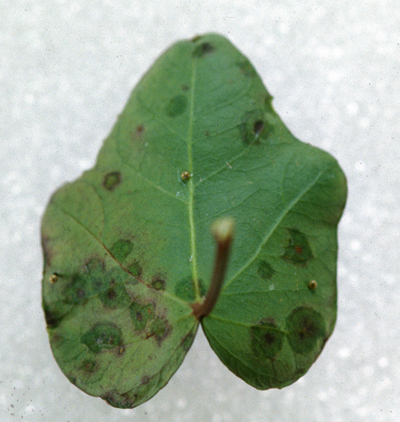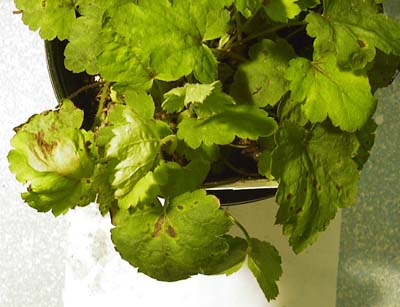Bacterial leaf spot
July 6, 2015
Bacterial diseases
Pathogen
Pseudomonas spp. and Xanthomonas spp.
Hosts include
Astilbe, Chrysanthemum, Delphinium, Echinacea, Heuchera, Hypericum and Rudbeckia.
Symptoms
Disease symptoms include water-soaked lesions on foliage that darken with age. Lesions may be bordered by the leaf venation.

Xanthomonas leaf spot of ivy. Note the water-soaked halos around leaf spots.
Spread
Bacteria on the plant surface are easily spread to nearby plants by splashing water from rain and irrigation. Asymptomatic plants can serve as a source of inoculum.
Management
Bacterial pathogens can survive and reproduce on the surface of asymptomatic plant tissues.

Bacterial leaf spots on Heuchera.
Disease symptoms develop once the pathogen reaches high population levels on the plant surface. Sanitation is especially important. Workers should wash their hands after handling diseased plants. Foliage should not be handled when it is wet. Symptomatic plants should be destroyed. Avoid overhead irrigation or time irrigation to minimize leaf wetness. Succulent tissue is especially susceptible to infection. Most fungicides are not effective against bacteria. Copper-based products are helpful in limiting populations of surface-borne populations of bacterial pathogens.
Print a PDF of this page: Bacterial Leaf Spot



 Print
Print Email
Email




